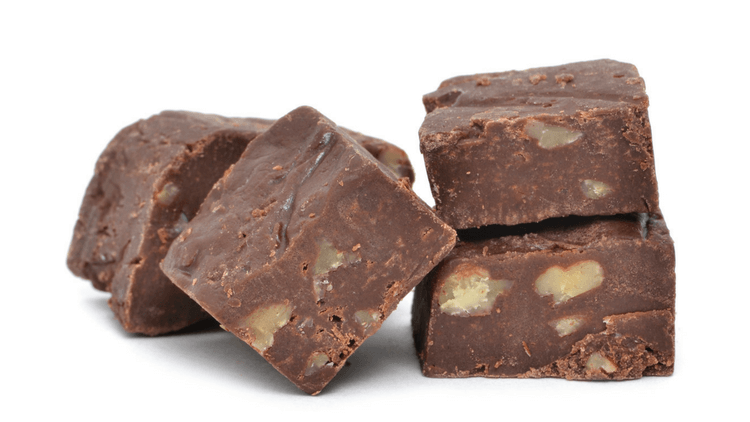You probably already know that there are many different tips and tricks for enhancing your memory. It can be a difficult process trying to sort through all of these techniques, particularly if you haven’t tried any of them yet. How are you supposed to know which ones work and which ones don’t?
One of the best yet least well-known of these tricks is chunking. Chunking has been studied for years and is often considered one of the most effective techniques that you can use to improve your memory. It’s so useful, in fact, that we’ve dedicated an entire article to teaching you what it is and how to use it!
So what is chunking?
Chunking is a term that refers to the breaking up of information into several pieces, or chunks. Doing this allows you to easily commit a larger amount of information to memory in a given amount of time. We’ll give you a good example in a moment.
The human brain is generally understood to be capable of committing only a few pieces of information into long-term memory. The number of pieces, or “bits,” varies for each person, but is generally believed to be around five bits. Some people can only effectively commit three or four bits of information to memory; others can easily remember six or more.
To show you what I mean, let’s take a piece of information – say, a phone number. If you were asked to remember the number 4238934, you might be able to do so by repeating the number over and over in your head until you can dial it into the phone. What if you need to remember the number for a bit longer, though?
The best way to do this is to “chunk” the number. Depending on your preference, you could do this in a couple of ways. You could chunk it into smaller numbers – say, 42, 38, 93, and 4. That’s still tricky, because you’re trying to remember four bits of information, but some people find that easier than the alternative.
The alternative is to chunk it into two bits – 423 and 8934. You’d probably want to remember the whole numbers in each chunk; instead of committing “four two three” to memory, you’d remember “four hundred and twenty-three.” Then you only have two bits of information. You can repeat them in your head to solidify the information and pass it into long-term memory. This is repetition.
The goal here is to take a large number of small pieces of information (the individual digits) and change them into a small number of larger pieces of information.
Chunking is a landmark technique because it allows us to take our scientific understanding of the human brain and apply it in order to improve ourselves. While we would normally struggle to remember so many small bits of information, we’re now able to adjust the way we look at things and commit them to memory differently.

How to apply chunking to daily life
Chunking can be applied to more than just phone numbers. Imagine you’re trying to remember a list of items. You could take several similar items from the list and assign that group an identity, and do this for the rest of the list. If your list has nine items, assign three groups and then remember the groups’ identities. This should make it easier to remember the individual items in the group.
You can use chunking while studying, as well. You can take different pieces of information that you learn throughout a study session. Using a similar technique to the one above, identify several groups which house the different ideas. This can also work for studying vocabulary, if you group similar-sounding or similarly spelled words together.
7 VEGAN BRAIN FOODS YOU SHOULD EAT, EVEN IF YOU EAT MEAT! >>
Progressive chunking
The coolest thing about chunking is that the technique can be improved. Similar to how chunking over a long period of time can permanently increase your memory, you can improve your ability to chunk items.
If you consciously practice chunking on a regular basis, you’ll probably find that you’ll be able to remember more and more chunks. One avid chunker, Daniel Bor, was initially only able to remember seven bits of information. After a year and a half, he could remember up to 80 bits of information!
Keep in mind that to improve your chunking skills to this degree, you’d need to dedicate some serious time to practice. Expect to spend at least an hour every day doing nothing but committing bits of information to memory!
That’s not to say that you can’t improve, though. It’s not necessary for most people to remember 80 bits of information at a time, and investing that much time and effort (however rewarding) would probably interfere with your daily routine. You can still practice your chunking on a daily basis, though.
All you have to do is observe, chunk, and remember. Make a conscious effort to memorize more things – however arbitrary – than you would otherwise leave written down or stored somewhere.
- If you’re going shopping, don’t let yourself buy anything until you’ve chunked and remembered your entire shopping list.
- If you have a varying daily schedule, try to remember everything you have to do in a day. If your daily schedule is routine, then try to chunk all the appointments and dates you have for the month and remember them. (Keep your day planner handy, though – you don’t want to get overconfident and forget something important!)
Expand your sphere of connectivity, too. Look for broader ways to build connections between different items that you may not have noticed before. For example, if your grocery list has fruits, vegetables, and canned food, those things are obviously related. However, if you’re just buying a bunch of different nuts, you might need to start connecting color, shape, size, or anything else that works for you.
In conclusion
Chunking is an effective technique that has been used by masters of memory for many years. However, we think it’s important to share this technique with you because it’s a great way for anyone to improve their memory. You don’t need to be a Mensa champion to make good use of chunking!
Hopefully the information we’ve provided today is valuable and makes a difference to your daily life. Happy chunking!




